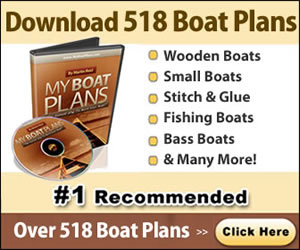
 Dana, Clint, and Michael getting things started...
Dana, Clint, and Michael getting things started... Clint introducing the speaker and asking everyone to share a bit about themselves...
Clint introducing the speaker and asking everyone to share a bit about themselves... Lots of visuals during the talk...
Lots of visuals during the talk... Including an amateur built rudder and rudder box for a Goat Island Skiff.
Including an amateur built rudder and rudder box for a Goat Island Skiff.
On November 1st I was pleased and honored to introduce Michael Storer, an Australian Boat Designer reputed for his simple, elegant, and approachable boats, to a group of 21 members from the wooden boat community in Maine, Massachusetts, and New Hampshire. Some knew of Storers work, others have built his boats, and many knew him as an important name and wanted to learn more about the man and his message. His message was simple: that we can vastly improve our boats by paying a great deal more attention to three areas: the centerboard and rudder foils, the spars and sail, and the hull itself. With regards to the foils, Michael convinced is audience that it is the way they are made -- with care towards fair, accurate foil shape and towards a smooth surface -- that most matters. Michael has taken research in optimal foil design and applied these foils to boats that, without them, would not sail nearly as well upwind and would be much trickier to handle. These foils are flat in the middle, thin for reducing weight and wood use, and closely approximate the hydrodynamics of a true NACA shape, without the expense and fuss and awkwardness of a wing-shaped foil in a square centerboard box or rocking around on a flat work bench during shaping.
With regards to spars and sails, Michaels point was clear that the most important aspect of spars is that they flex and bend in the right way, the right amount. Spar bend is critical to the ability of a sail rig to absorb a gust, reducing heeling and putting the energy into forward momentum. The sail need not be a 600-dollar racing sail, but a simple polytarp will do cut with round to create the draft necessary to create power in the sail. His PDR Oz boats are a case in point. They all sail with polytarp sails, about a $30 dollar investment. And because they all use the same cloth, they can race against each other without the "upping the ante" attitude that has cause racing to be more expensive and less accessible to more and more people around the world.
Interestingly, Michael left the hull out for last. He says the hull is less important because of the way quality foils and spars can make a good boat go faster than it should. The PD racer is a square hull and wide flat bottom. As evidenced by the messabout after the talk, it does go beautifully. Why? Because of the foils and spars, but also because the hull is light. Michael discussed the keys to making a hull light, using light plywood in a hull that is reinforced the right way, using stringers, fillets, butt joints, and interior compartments that create a light, stiff structure with nothing more than 6mm plywood. Fiberglass is heavy and Michael stressed that fiberglassing adds weight with little gain in structural integrity or even abrasion resistance. Most boats being glassed with 6oz cloth do not need it for structure and are not being used in such a way they it is needed to protect the boat from abrasion. Cloth as light as 2-oz cloth will be enough. He said that builders have also succumbed to the "upping the ante" mentality, trying to do things better and better and better than anyone else, ending up with heavier boats and poorer performance.
Australia saw another 25-plus years of wooden boat development that America and Europe did not see because of the way that market forces drove us to Fiberglass boats much sooner than they did in Oz. The result is much further refinement of glued-plywood construction and testing in the small boat racing circuits around the country. We are just now learning here in the States, thanks to Michaels generous knowledge sharing and this trip he has made to the USA.
Afterwards we enjoyed some great rowing and sailing off Portlands East End. Pictures of the messabout can be seen at the WoodenBoat Forum and at Michael Storers own Oz Forum:
http://www.woodenboat.com/forum/showthread.php?p=2372819#post2372819
http://www.woodworkforums.com/f169/
Folks will see many of Michaels philosophies played out at Clint Chase Boatbuilder in the Spruce-Composite oars, Birdsmouth masts, and soon foils, tillers, and other components made to improve the performance of customers existing dories, skiffs, dinghies, and utility boats. Please check my website as updates will be ongoing as product development progresses and made available for sale.






0 komentar:
Posting Komentar